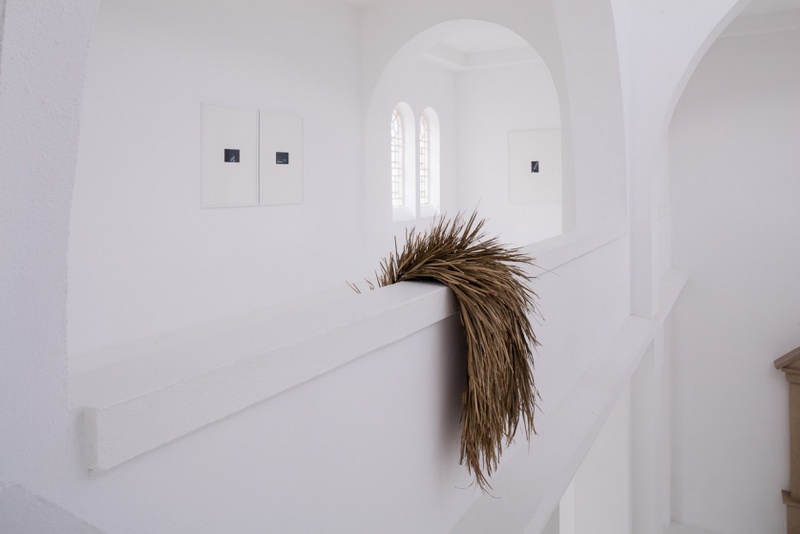The sculpture Cape de Pluie, Courtesy Azul Jacinto Marino (2015) consists of a rain cape made of woven palm leaves. It is a ready-made item of clothing made by skilled craftsmen according to ancient tradition. In Mexico, where the two visual artists are living, these rain capes are called capote de plumas, which means cloak of feathers, because palm leaves look somewhat similar to feathers.
Rometti Costales linked this practical object to a character they invented; ‘Azul Jacinto Marino’ (whose Spanish name stands for three shades of blue), an anarchist, a shaman and a poet forming the basis of a similar art project. The project Azul Jacinto Marino is described by the artists as ‘a polysemic platform’ in which – represented by various practical and art objects – a wide range of interests, philosophical issues, fiction and history, come together.
As their starting point for this project, the two artists took the Spanish anarchist military Antonio García Barón who left for the rainforest of Bolivia in 1953. That’s where Barón became friends with indigenous tribes and discovered shamanism, connecting certain ideas to his own political views. Combining two very different ideas allowed him to develop a rather extreme, non-hierarchical view of the world in which mankind is no longer central, but positioned on the same level as a jaguar or a cactus for example, or a flash of lightning, the colour blue or a word. To Rometti Costales, this history embodies the potential of ambivalent approaches when they are combined, just like Barón united political and magical points of view.
The props in Azul Jacinto Marino are also characterised by an ambivalent and multi-interpretable nature. For example, in the case of Cape de Pluie, Courtesy Azul Jacinto Marino the indigenous associations of the object appealed to the two artists, while the rain capes are originally from the Philippines. The natural, almost animal-like appearance of the material combined with its practical use also captured their imagination. Draped over a wall in De Garage, the work can be regarded as a reminder of Azul Jacinto Marino and his ideas.

